Adresse
304, rue Cardinal Nord
Centre Dorchester, MA 02124
Heures de travail
Du lundi au vendredi : 7h - 19h
Week-end : 10h - 17h
Bienvenue sur mon blog !
Avant de plonger dans le contenu, j'aimerais que vous me rejoigniez sur mes plateformes de médias sociaux où je partage plus d'informations, interagis avec la communauté et publie des mises à jour. Voici comment vous pouvez me contacter :
Facebook :https://www.facebook.com/profile.php?id=100071234835011
LinkedIn :https://www.linkedin.com/company/74943205/admin/dashboard/
YouTube :www.youtube.com/@shandongexpertmedicalequip4695
TikTok :www.tiktok.com/@expertmedical
Commençons maintenant notre voyage ensemble. J'espère que vous trouverez le contenu ici instructif, engageant et utile.
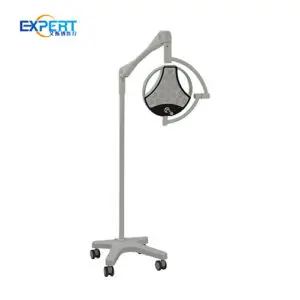
Dans le domaine de la médecine moderne, même les interventions chirurgicales mineures exigent les plus hauts niveaux de précision et de visibilité. C'est là qu'entre en jeu le rôle crucial des éclairages chirurgicaux mineurs. Ces systèmes d'éclairage spécialisés sont conçus pour fournir un éclairage optimal lors d'interventions chirurgicales moins invasives, garantissant la précision et minimisant l'inconfort du patient. Parmi les différents types d'éclairages chirurgicaux mineurs disponibles, la technologie LED (diode électroluminescente) s'est imposée comme le favori, offrant une multitude d'avantages par rapport aux solutions d'éclairage traditionnelles. Cet article de blog complet se penchera sur les nombreux avantages des éclairages chirurgicaux mineurs à LED, en explorant leur impact sur les résultats chirurgicaux, l'efficacité et les pratiques de soins de santé en général. Nous discuterons des principales caractéristiques, des avantages et des questions fréquemment posées concernant ces outils indispensables de la médecine moderne.
Les interventions chirurgicales mineures englobent un large éventail d'interventions mini-invasives réalisées en milieu ambulatoire ou en clinique. Ces interventions impliquent généralement une anesthésie locale et des temps de récupération plus courts que les interventions chirurgicales majeures. Les exemples d'interventions chirurgicales mineures comprennent les biopsies, l'ablation de grains de beauté, l'ablation de verrues, la réparation de lacérations mineures et certaines interventions dentaires.
Le succès de ces interventions repose en grande partie sur une visualisation claire du site chirurgical. Un éclairage adéquat est primordial pour que les chirurgiens puissent identifier avec précision les structures anatomiques, différencier les tissus et effectuer des manipulations précises. Un éclairage insuffisant ou inadéquat peut entraîner des erreurs, des complications et une gêne accrue pour le patient. C'est pourquoi des éclairages chirurgicaux mineurs spécialisés sont essentiels. Ils sont conçus pour fournir un éclairage concentré et de haute intensité tout en minimisant les ombres et l'éblouissement, garantissant une visibilité optimale tout au long de l'intervention.
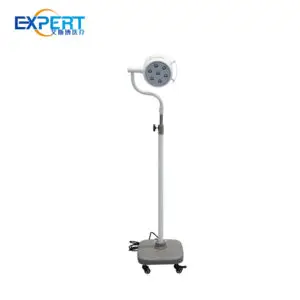
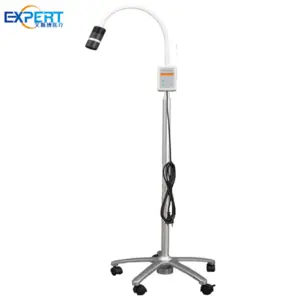
Les éclairages chirurgicaux mineurs à LED représentent une avancée significative dans la technologie de l'éclairage chirurgical. Par rapport aux lampes halogènes ou à incandescence traditionnelles, les LED présentent de nombreux avantages convaincants :
Les LED produisent une lumière blanche brillante qui imite étroitement la lumière naturelle du jour. Ce rendu des couleurs supérieur permet aux chirurgiens de distinguer avec précision les différents types de tissus et d'identifier les variations subtiles de couleur, ce qui est essentiel pour un diagnostic et un traitement précis. L'indice de rendu des couleurs (IRC) des éclairages chirurgicaux mineurs à LED est généralement très élevé (souvent supérieur à 90), ce qui indique une excellente précision des couleurs. Cet éclairage amélioré réduit également la fatigue oculaire des chirurgiens lors des longues interventions.
Les LED sont nettement plus économes en énergie que les sources lumineuses traditionnelles. Elles convertissent un pourcentage plus élevé d'électricité en lumière, avec une perte d'énergie minimale sous forme de chaleur. Cela se traduit par des économies substantielles sur les factures d'électricité au fil du temps. La production de chaleur réduite contribue également à un environnement de travail plus confortable pour l'équipe chirurgicale.
Les LED ont une durée de vie exceptionnellement longue, qui dure généralement des dizaines de milliers d'heures. Cela réduit considérablement la fréquence de remplacement des ampoules, minimisant ainsi les temps d'arrêt et les coûts de maintenance. Par rapport aux ampoules halogènes, qui nécessitent un remplacement fréquent, les éclairages chirurgicaux mineurs à LED offrent une solution simple et économique.
Contrairement aux lampes halogènes, qui génèrent une chaleur importante, les LED produisent très peu de chaleur. Cela minimise le risque d'inconfort pour le patient et de dommages thermiques aux tissus pendant l'intervention. La température de fonctionnement plus fraîche contribue également à un environnement de travail plus confortable pour le personnel chirurgical.
Les LED sont petites et compactes, ce qui permet de concevoir des éclairages chirurgicaux mineurs de manière flexible et ergonomique. Ces éclairages sont souvent conçus avec des bras réglables et des cols de cygne flexibles, ce qui permet aux chirurgiens de positionner facilement la source lumineuse pour un éclairage optimal sous différents angles.
Les LED sont respectueuses de l’environnement car elles ne contiennent pas de substances dangereuses comme le mercure, présent dans certaines technologies d’éclairage traditionnelles. Leur efficacité énergétique contribue également à réduire l’empreinte carbone, ce qui en fait un choix durable pour les établissements de santé.
Les éclairages chirurgicaux mineurs à LED avancés utilisent souvent plusieurs LED disposées selon des configurations spécifiques pour minimiser les ombres et fournir un éclairage uniforme du champ chirurgical. Cette réduction des ombres améliore la visibilité et permet aux chirurgiens d'effectuer des manipulations plus précises.








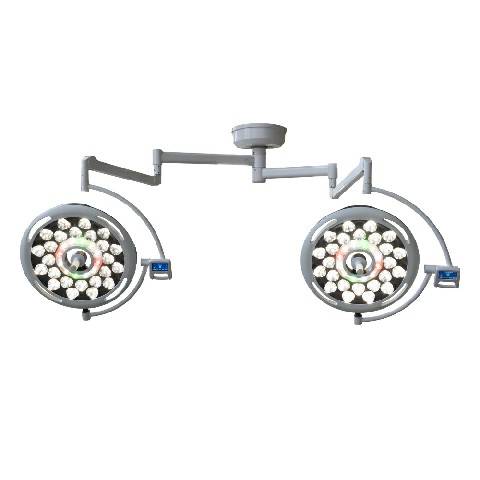
Le tableau suivant résume les principales différences entre les sources lumineuses LED, halogènes et à incandescence couramment utilisées en milieu chirurgical :
| Caractéristique | DIRIGÉ | Halogène | Incandescent |
|---|---|---|---|
| Efficacité énergétique | Très élevé | Modéré | Faible |
| Durée de vie | Très long (des dizaines de milliers d'heures) | Court (Quelques milliers d'heures) | Très court (quelques centaines d'heures) |
| Émission de chaleur | Très faible | Haut | Très élevé |
| Rendu des couleurs | Excellent (IRC > 90) | Bon (IRC > 80) | Faible (IRC < 80) |
| Impact environnemental | Faible (sans mercure) | Modéré | Haut |
| Coût | Coût initial plus élevé, coût d'exploitation plus faible | Coût initial inférieur, coût d'exploitation plus élevé | Coût initial le plus bas, coût d'exploitation le plus élevé |
Plusieurs types d'éclairages chirurgicaux mineurs à LED sont disponibles pour répondre aux besoins spécifiques de différentes procédures et contextes :
Le choix d'un éclairage chirurgical mineur à LED adapté est essentiel pour des performances optimales et la sécurité du patient. Les facteurs clés à prendre en compte sont les suivants :
L'éclairage supérieur, le rendu des couleurs et d'autres avantages des éclairages chirurgicaux mineurs à LED ont un impact positif direct sur les résultats chirurgicaux :
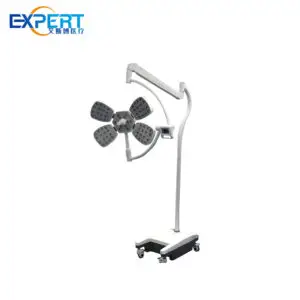
Le domaine de l'éclairage chirurgical mineur à LED continue d'évoluer grâce aux avancées technologiques. Voici quelques tendances futures :
DIRIGÉ lampes chirurgicales mineures Les lampes chirurgicales à LED représentent une avancée significative dans la technologie de l'éclairage chirurgical, offrant une multitude d'avantages par rapport aux sources lumineuses traditionnelles. Leur éclairage supérieur, leur rendu des couleurs, leur efficacité énergétique et d'autres avantages contribuent à améliorer les résultats chirurgicaux, l'efficacité et le confort des patients. Investir dans des lampes chirurgicales mineures à LED de haute qualité est un investissement crucial pour tout établissement de santé effectuant des interventions chirurgicales mineures. Ces lampes ne sont pas de simples accessoires ; ce sont des outils essentiels qui permettent aux chirurgiens de donner le meilleur d'eux-mêmes, garantissant les normes les plus élevées de soins aux patients. En privilégiant la précision et la visibilité avec les lampes chirurgicales mineures à LED, les prestataires de soins de santé peuvent améliorer la qualité des interventions chirurgicales mineures et améliorer l'expérience globale des patients.
Quelle est la durée de vie typique d'une LED lampe chirurgicale mineure?
Les LED ont généralement une durée de vie de plusieurs dizaines de milliers d’heures, bien plus longue que les ampoules halogènes ou à incandescence traditionnelles.
Les éclairages chirurgicaux mineurs à LED sont-ils plus chers que les éclairages traditionnels ?
Bien que le coût initial des lampes LED puisse être légèrement plus élevé, leurs coûts de fonctionnement inférieurs et leur durée de vie plus longue en font une solution plus rentable à long terme.
Faire des LED lampes chirurgicales mineures produire de la chaleur ?
Les LED produisent très peu de chaleur par rapport aux lampes halogènes, minimisant ainsi l’inconfort du patient et les dommages thermiques aux tissus.
Qu’est-ce que l’IRC et pourquoi est-il important pour l’éclairage chirurgical ?
L'IRC (indice de rendu des couleurs) mesure la capacité d'une source lumineuse à reproduire fidèlement les couleurs. Un IRC élevé (supérieur à 90) est essentiel pour l'éclairage chirurgical car il permet aux chirurgiens de distinguer les différents types de tissus et d'identifier les variations subtiles
